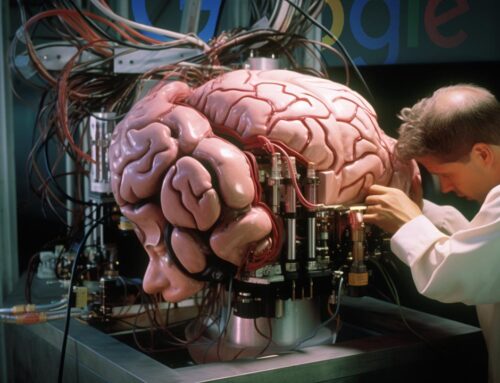One significant advancement in Google‘s search algorithm is the introduction of RankBrain, a machine learning-based component that helps the search engine better understand and process complex search queries. In this comprehensive article, we will delve into the Google RankBrain algorithm update, examining its motivations, effects on search results, and its lasting impact on search engine optimization (SEO).
You will learn about the factors that led to the creation of the RankBrain update, how it works, its impact on the SEO industry, and how it has shaped the way search engines approach query understanding and processing. We will also discuss the various updates and iterations RankBrain has undergone since its launch and the most important takeaway from this influential update.
Table of Contents
1. Introduction to the Google RankBrain Algorithm Update
The Google RankBrain algorithm update was first introduced in 2015, with the primary goal of improving the search engine’s ability to understand and process complex, long-tail search queries. RankBrain is a machine learning-based system that helps Google process and interpret the intent behind search queries, particularly those that have not been seen before or are phrased in a unique way. By leveraging machine learning, RankBrain can continually improve its understanding of user intent and provide more relevant and useful search results.
2. The Need for the RankBrain Update
Before the introduction of RankBrain, Google’s search algorithm relied heavily on traditional keyword-based matching to determine the relevance of a website to a given query. However, this approach was not always effective at understanding the underlying intent of complex, long-tail queries or those with unique phrasing. As a result, users would sometimes receive search results that were less relevant or useful.
To address this issue, Google developed RankBrain, a machine learning-based system that could better understand and interpret user intent behind search queries. By incorporating RankBrain into its search algorithm, Google aimed to improve the overall quality and relevance of search results, particularly for complex, long-tail queries.
3. How Does RankBrain Work?
RankBrain works by analyzing search queries and determining the underlying intent behind them. It then uses this understanding to match queries with the most relevant and useful search results. Some key aspects of RankBrain’s functionality include:
- Query interpretation: RankBrain analyzes the words and phrases used in a search query and uses machine learning to determine the intent behind them. This allows it to better understand the meaning of complex, long-tail queries or those with unique phrasing.
- Semantic understanding: RankBrain is capable of understanding the relationships between words and phrases, allowing it to better interpret the meaning of search queries and match them with the most relevant content.
- Continuous learning: As a machine learning-based system, RankBrain continually learns from new data and adapts its understanding of user intent, helping it provide increasingly relevant and useful search results over time.
4. Impact of RankBrain on SEO
The introduction of RankBrain had significant implications for the SEO industry, as it shifted the focus from traditional keyword-based optimization to a more intent-driven approach. Some key changes that occurred as a result of the RankBrain update include:
- Emphasis on user intent: With RankBrain’s ability to better understand user intent, SEO professionals needed to focus on creating content that aligns with the intent of their target audience, rather than simply targeting specific keywords.
- Importance of semantic understanding: RankBrain’s semantic understanding capabilities emphasized the need for SEO professionals to consider the relationships between words and phrases in their content, ensuring that it accurately reflects the meaning and intent of relevant search queries.
- Adaptation to continuous learning: As RankBrain continually learns and adapts its understanding of user intent, SEO professionals need to stay up-to-date with the latest developments in search algorithms and adjust their strategies accordingly.
5. RankBrain’s Legacy and Its Effects on Search Engine Optimization
The Google RankBrain update has had a lasting impact on the way search engines approach query understanding and processing, as well as how SEO professionals optimize their content. Some key effects of the RankBrain update on search engine optimization include:
- Focus on intent-driven content: RankBrain has reinforced the importance of creating content that aligns with the intent of users, leading to a greater focus on intent-driven content strategies.
- Adoption of semantic SEO techniques: In response to RankBrain’s semantic understanding capabilities, SEO professionals have increasingly adopted semantic SEO techniques, which involve optimizing content based on the relationships between words and phrases, rather than simply targeting specific keywords.
- Emphasis on user experience: With RankBrain’s focus on providing the most relevant and useful search results, SEO professionals have increasingly prioritized user experience in their optimization strategies, ensuring that their content is engaging, informative, and valuable to users.
Final Thoughts
The most important takeaway from the Google RankBrain algorithm update is the critical role that understanding user intent plays in search engine optimization. By focusing on the intent behind search queries, RankBrain has shifted the SEO industry towards a more user-centric approach that prioritizes the creation of valuable, intent-driven content.
To succeed in today’s online landscape, SEO professionals must adapt their strategies to align with the evolving understanding of user intent in search algorithms like RankBrain. By doing so, they can not only improve their search rankings but also provide a better overall experience for users seeking their products or services.
Sources
- Google RankBrain: The Definitive Guide – Backlinko: https://backlinko.com/google-rankbrain-seo
- RankBrain: A Study to Measure Its Impact – Stone Temple
- How Google’s RankBrain Algorithm Affects SEO in 2016 – Search Engine Land










